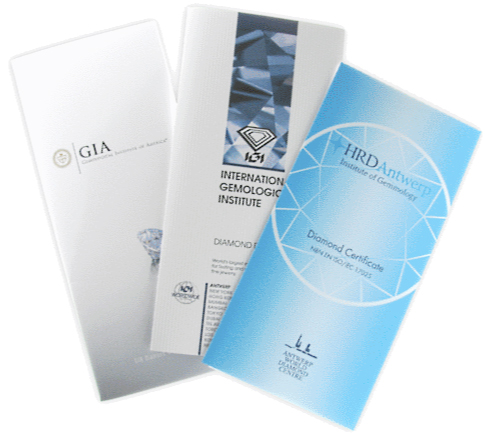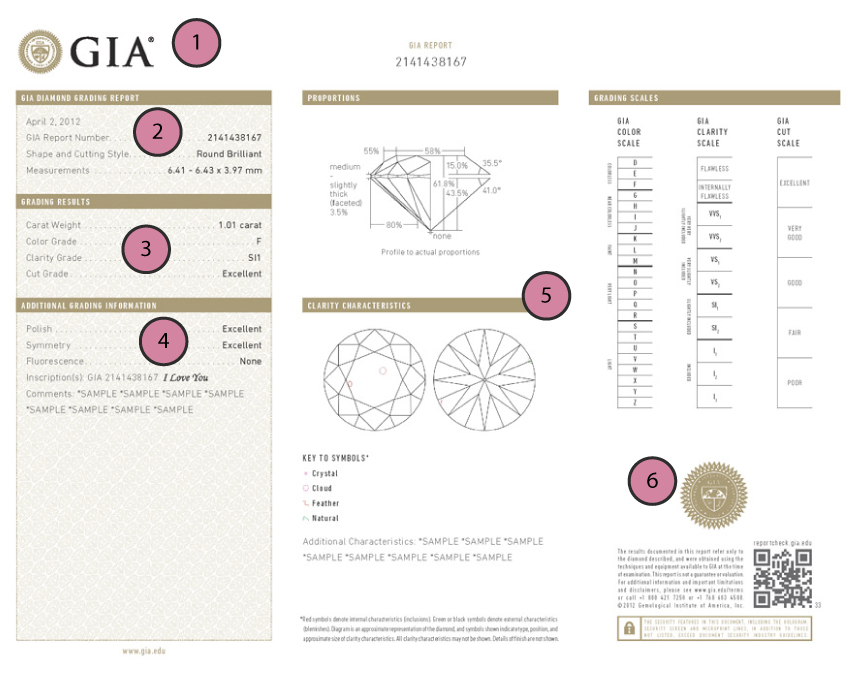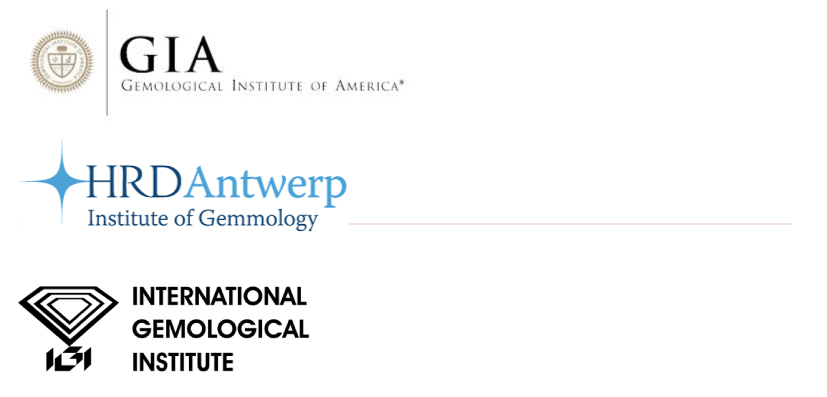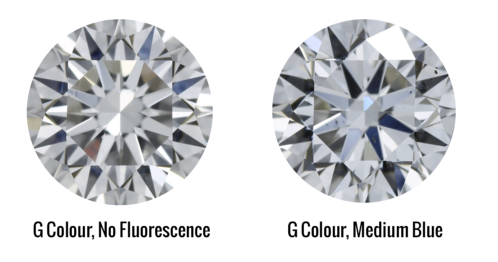
HOW TO READ
DIAMOND
CERTIFICATES
Often called the 5th C, in addition to,
cut, color, clarity, and carat weight,
a Diamond Certicate, or Cert
is an indispensible tool
that helps you evaluate
and choose your diamond
with confidence and convenience.
Read on to learn how to read them
like an expert.
What is a Certificate?
A diamond certificate, also called a diamond grading report, is a report created by a team of gemologists. The diamond is evaluated, measured, and scrutinized using trained eyes, a jeweler’s loupe, a microscope, and other industry tools. A completed certificate includes an analysis of the diamond’s 4Cs – Color, Clarity, Cut and Carat Weight, dimensions and other characteristics.
Anatomy of a Certificate

1. What’s in a Name?
The number one most important item to look for on a Diamond Certificate is the name of the laboratory who issues it! Here are some of the most well-known labs with world-wide high reputations:

Gemological Institute of America (GIA) (www.gia.edu)
Diamond High Council (HRD) (www.hrdantwerp.com)
International Gemological Institute (IGI) (www.igiworldwide.com)
Here, we’ll focus our attention to a Diamond Certificate issued by GIA, who is considered by most to be the industry
standard and is the most widely used and trusted name in the diamond trade.
2. Certificate (Grading Report) Number, Cutting Style and Measurements
The next detail you would notice is the report number, which is a unique series of digits for identification purposes. Most labs retain this number in their database in case you misplace your report and need a replacement. More importantly, this number also allows you to have a direct verification of the document via the gemological lab’s website.
Continuing downwards, you can find information about the diamond’s characteristics, listed in this order: shape and cutting style and measurements. The first feature describes the shape of the stone and its cutting style, such as round brilliant or pear. After that, you can see information about the diamond’s physical dimensions measured to the nearest hundredth of a millimeter.
3. The Four Cs
Moving on to the next section is the carat weight, which describes the weight of the stone measured to the hundredth of a carat.
The color grade is based on an assessment of the lack of color in the diamond. Color grades start from D to Z and the fancy color grading system is applied if a diamond displays a color intensity beyond the Z color rating.
The clarity grade is determined by a gemologist who examines the stone under 10X magnification for inclusions and imperfections.
The cut grade is assigned based on a scale of excellent to poor in a GIA report. For the layman, this is one of the most essential qualities to look out for since it directly affects the brilliance and sparkle of the diamond.
4. Additional Grading Information
Polish is an indication of how smooth the diamond’s surface is. A well-polished diamond can produce crisp looking reflections and undistorted light transmissions. Symmetry is the comparison of how the stone’s facets are aligned in relation with one another.
The next feature you can find in this section is the description of the diamond’s fluorescence properties. The fluorescence of a diamond is described based on the intensity and the color it glows with when exposed to ultraviolet (UV) light. Too much fluorescence may impact a diamond’s transparency and makes it less desireable.

Under the “Other Comments” section, all other miscellaneous information about the diamond will be listed here. For example, laser inscriptions (if any), additional details to help with identification and clarity characteristics that are too complicated to be plotted in the reference diagram can be found here.
5. Reference Diagrams
Every diamond is unique in terms of its clarity characteristics. Like our fingerprints, the clarity plot diagram is a graphical representation of the diamond’s “birthmarks”. When looking at the symbols and identifying the types of flaws, you should pay extra attention to what you see.
Blemishes (external) are marked in green color while inclusions (internal) are marked in red.
Next, you find the critical proportions of the stone indicated in a profile view. This proportions diagram is useful for people who wish to analyze the diamond based on numbers like table %, depth %, crown angles, pavilion angles and girdle thickness.
On the proportions diagram, the presence of a culet and the girdle thickness are also indicated. For girdle thickness, a range between thin – slightly thick is preferred so that the diamond faces up bigger.
6. Security Features And Authenticity Marks
In the final part of the report, you should look out for security features as they can help prove the authenticity of the document.
Typically, these security marks come in the form of a hologram, a universal product code or an embossed stamp.
For a peace of mind, most labs provide an online verification service where you can perform an instant verification.

